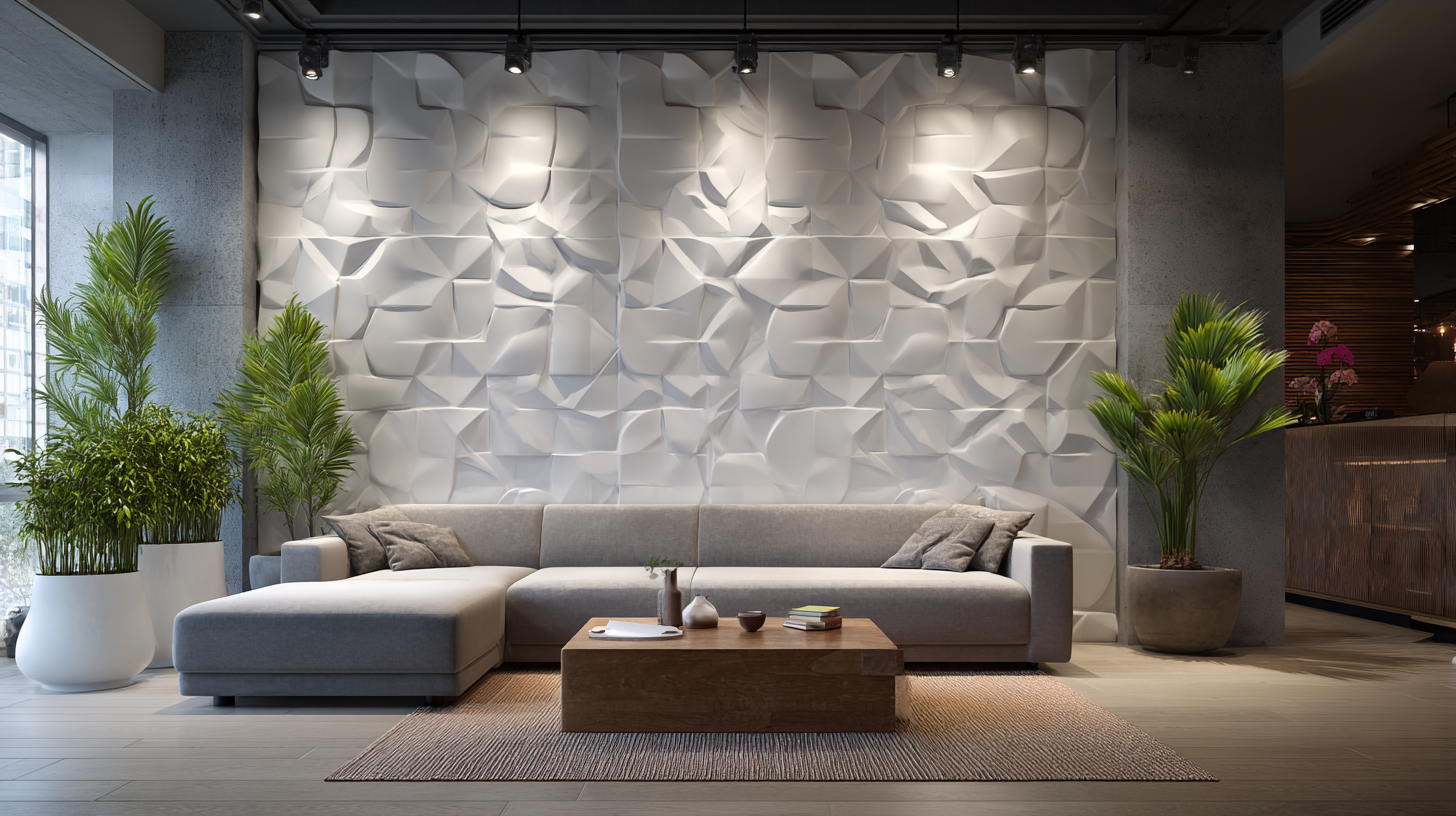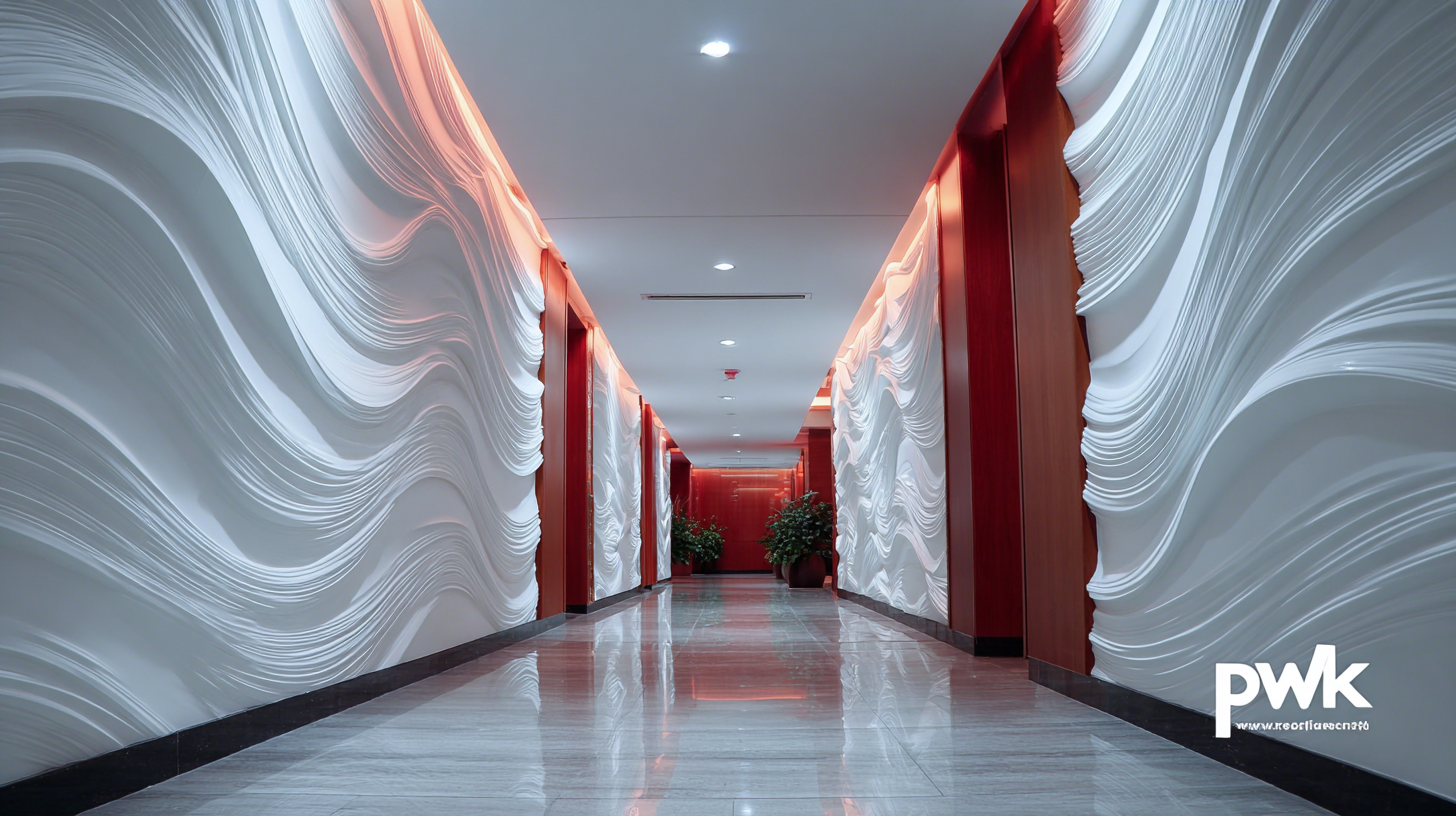Shandong Xiangying New Materials Technology Co., Ltd.
Shandong Xiangying New Materials Technology Co., Ltd.
As the demand for innovative interior design solutions continues to rise, 3D PVC wall panels have emerged as a leading choice for homeowners and designers alike. According to a recent industry report from Grand View Research, the global market for decorative wall panels is projected to reach USD 12.5 billion by 2025, driven by increasing consumer preference for aesthetic appeal and easy installation. With their unique ability to enhance visual depth and texture, 3D PVC wall panels are particularly favored in both residential and commercial applications. However, navigating the import-export process for these products can be complex, especially when it comes to certifications and compliance standards. This blog will provide a comprehensive tutorial on how to efficiently manage import-export certifications for the best 3D PVC wall panels, ensuring that manufacturers and retailers can tap into the growing marketplace while adhering to regional regulations and standards.

When navigating the import export certifications for 3D PVC wall panels, understanding the necessary compliance requirements is crucial for manufacturers and distributors. These panels are increasingly popular due to their aesthetic appeal and versatility in interior design. To successfully import or export these products, it's essential to be aware of the specific standards they must meet. This includes regulations regarding fire safety, environmental impact, and material certifications. For instance, panels made from PVC should adhere to fireproof and thermal insulation guidelines, ensuring they contribute to safer building practices.
In recent developments, the production of 3D PVC wall panels has evolved, incorporating eco-friendly practices and materials. Manufacturers are not only focusing on aesthetic values but also on sourcing sustainable materials. Innovations such as sound-absorbing features and recycled inputs are becoming standard. This shift not only enhances product appeal but also aligns with regulatory trends emphasizing sustainability. As companies prepare for market entry, a comprehensive understanding of import export certifications will facilitate smoother transactions and ensure compliance with international trade standards.
| Certification Type | Description | Issuing Authority | Validity Period | Cost (Estimated) |
|---|---|---|---|---|
| ISO 9001 | Quality Management System | International Organization for Standardization | 3 Years | $1,000 - $3,000 |
| CE Marking | Conformity with Health, Safety, and Environmental Protection Standards | European Union | Varies (Usually Decided by Manufacturer) | $500 - $2,000 |
| LEED Certification | Leadership in Energy and Environmental Design | U.S. Green Building Council | 2 Years | $1,250 - $7,500 |
| ASTM Standards | American Society for Testing and Materials compliance | ASTM International | Varies | Variable (testing costs apply) |
| GreenGuard Certification | Low Chemical Emissions for Better Indoor Air Quality | GreenGuard Environmental Institute | 1 Year | $1,000 - $5,000 |
When selecting high-quality PVC wall panels, understanding the key technical parameters is crucial. First and foremost, consider the panel thickness, typically ranging from 4mm to 10mm. Thicker panels provide better durability and sound insulation, making them ideal for both residential and commercial applications. Additionally, pay attention to the panel density, which directly impacts its strength and longevity. A density of 1.3–1.5 g/cm³ is generally considered optimal for high-quality installations.

Another important parameter is the surface finish of the PVC panels. Matte finishes are popular for modern aesthetics, while gloss finishes reflect light and can brighten spaces. Look for panels that offer UV protection to prevent fading over time, especially in sunlit areas.
Tips: When shopping for PVC wall panels, always request samples to assess the color and texture firsthand. Also, consider panels with flame-retardant properties for enhanced safety. Finally, verify that the panels come with warranties, ensuring that you are covered in case of defects or premature wear. This attention to detail will help you choose the best materials for your project.
When venturing into the world of importing and exporting 3D PVC wall panels, navigating the complexities of certifications is crucial. This step-by-step guide will help you obtain the necessary import-export certifications to ensure compliance with international trade regulations. Begin by understanding the specific certifications required in your target market, which may vary depending on regional standards and safety regulations. Researching these requirements will save you time and potential legal issues down the line.
Once you have identified the necessary certifications, prepare your documentation meticulously. This typically includes product specifications, safety data sheets, and quality assurance measures. Collaborating with certified testing labs can streamline this process, providing you with the necessary reports that validate your product's compliance. After compiling your documents, apply for the relevant certifications through the appropriate government agencies. Be prepared to undergo inspections or testing phases, as these steps are often integral to the certification process. With diligence and attention to detail, you can successfully navigate the import-export certification maze for your 3D PVC wall panels.

Exporting 3D PVC wall panels can be a rewarding venture, but it also presents several challenges that businesses must navigate to achieve success in the global market. One major issue is compliance with international regulations and certifications. Each country has specific requirements regarding safety, material standards, and environmental effects, which can lead to delays and additional costs if not properly addressed. Companies must invest time and resources in understanding these regulations to ensure their products meet the necessary criteria for export.
Another common challenge involves logistics and supply chain management. Transporting large and bulky wall panels can be complicated, with risks of damage during transit and the complexities of customs clearance. Businesses should consider partnering with experienced logistics providers who understand the intricacies of international shipping. Additionally, effective communication and planning with suppliers and buyers can help streamline the process, ensuring timely delivery. By proactively identifying these challenges and implementing strategic solutions, exporters can better position themselves in the competitive market of 3D PVC wall panels.
When dealing with the export of 3D PVC wall panels, adherence to compliance regulations and quality assurance practices is paramount. The first step is to familiarize yourself with the specific certification requirements in both the exporting and importing countries. These can vary significantly and often include quality management standards such as ISO certification, ensuring that the products meet specific safety and performance benchmarks. Engaging with a reputable certification body can streamline the process and provide clarity on the necessary documentation.
In addition to certifications, implementing rigorous quality control measures throughout the manufacturing process is essential. This includes conducting regular inspections and testing of materials, ensuring that the final products conform to the expected standards. Establishing a traceability system can also enhance transparency, allowing you to track each batch of products from production to delivery. By prioritizing compliance and quality assurance, exporters can build trust with international clients, enhance their market reputation, and ultimately drive success in the competitive arena of 3D PVC wall panel exports.
This chart illustrates the number of certifications required for different export markets in relation to 3D PVC wall panels. It highlights the key markets and the corresponding certifications that need to be obtained for compliance.
